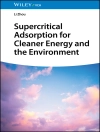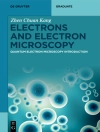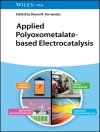The latest edition of a classic textbook in electrochemistry
The third edition of Electrochemical Methods has been extensively revised to reflect the evolution of electrochemistry over the past two decades, highlighting significant developments in the understanding of electrochemical phenomena and emerging experimental tools, while extending the book’s value as a general introduction to electrochemical methods.
This authoritative resource for new students and practitioners provides must-have information crucial to a successful career in research. The authors focus on methods that are extensively practiced and on phenomenological questions of current concern.
This latest edition of Electrochemical Methods contains numerous problems and chemical examples, with illustrations that serve to illuminate the concepts contained within in a way that will assist both student and mid-career practitioner.
Significant updates and new content in this third edition include:
* An extensively revised introductory chapter on electrode processes, designed for new readers coming into electrochemistry from diverse backgrounds
* New chapters on steady-state voltammetry at ultramicroelectrodes, inner-sphere electrode reactions and electrocatalysis, and single-particle electrochemistry
* Extensive treatment of Marcus kinetics as applied to electrode reactions, a more detailed introduction to migration, and expanded coverage of electrochemical impedance spectroscopy
* The inclusion of Lab Notes in many chapters to help newcomers with the transition from concept to practice in the laboratory
The new edition has been revised to address a broader audience of scientists and engineers, designed to be accessible to readers with a basic foundation in university chemistry, physics and mathematics. It is a self-contained volume, developing all key ideas from the fundamental principles of chemistry and physics.
Perfect for senior undergraduate and graduate students taking courses in electrochemistry, physical and analytical chemistry, this is also an indispensable resource for researchers and practitioners working in fields including electrochemistry and electrochemical engineering, energy storage and conversion, analytical chemistry and sensors.
表中的内容
Preface xxi
Major Symbols and Abbreviations xxv
About the Companion Website liii
1 Overview of Electrode Processes 1
2 Potentials and Thermodynamics of Cells 61
3 Basic Kinetics of Electrode Reactions 121
4 Mass Transfer by Migration and Diffusion 183
5 Steady-State Voltammetry at Ultramicroelectrodes 207
6 Transient Methods Based on Potential Steps 261
7 Linear Sweep and Cyclic Voltammetry 311
8 Polarography, Pulse Voltammetry, and Square-Wave Voltammetry 355
9 Controlled-Current Techniques 389
10 Methods Involving Forced Convection–Hydrodynamic Methods 411
11 Electrochemical Impedance Spectroscopy and ac Voltammetry 443
12 Bulk Electrolysis 489
13 Electrode Reactions with Coupled Homogeneous Chemical Reactions 539
14 Double-Layer Structure and Adsorption 599
15 Inner-Sphere Electrode Reactions and Electrocatalysis 653
16 Electrochemical Instrumentation 721
17 Electroactive Layers and Modified Electrodes 755
18 Scanning Electrochemical Microscopy 819
19 Single-Particle Electrochemistry 851
20 Photoelectrochemistry and Electrogenerated Chemiluminescence 885
21 In situ Characterization of Electrochemical Systems 931
Appendix A Mathematical Methods 967
Appendix B Basic Concepts of Simulation 985
Appendix C Reference Tables 1007
References 1013
Index 1015
关于作者
Allen J. Bard is Professor and Hackerman-Welch Regents Chair in Chemistry at the University of Texas at Austin in the United States. His research is focused on the application of electrochemical methods to the study of chemical problems.
Larry R. Faulkner is President Emeritus of the University of Texas at Austin in the United States. He has served on the chemistry faculties of Harvard University, the University of Illinois, and the University of Texas.
Henry S. White is Distinguished Professor and John A. Widstoe Presidential Chair in the Department of Chemistry at the University of Utah in the United States. His research is focused on experimental and theoretical aspects of electrochemistry.












